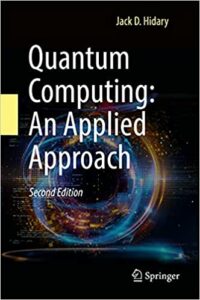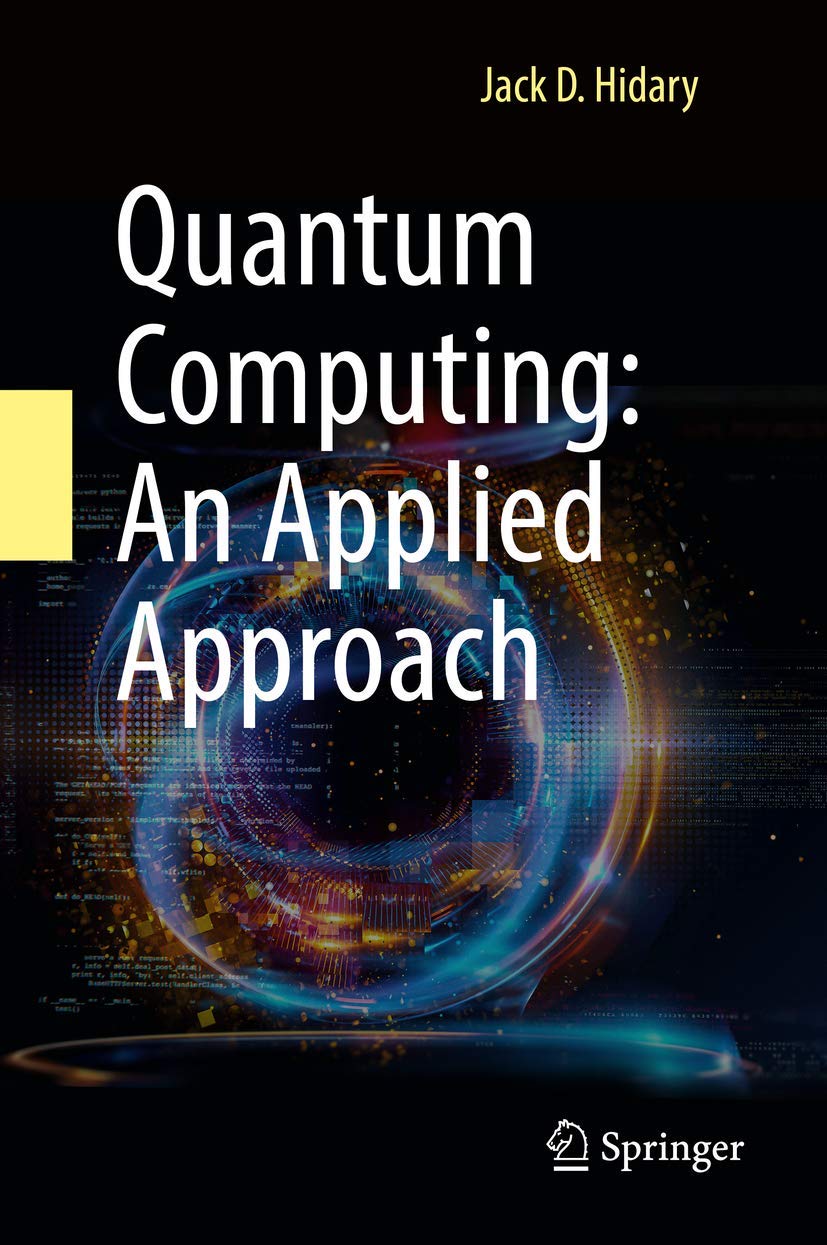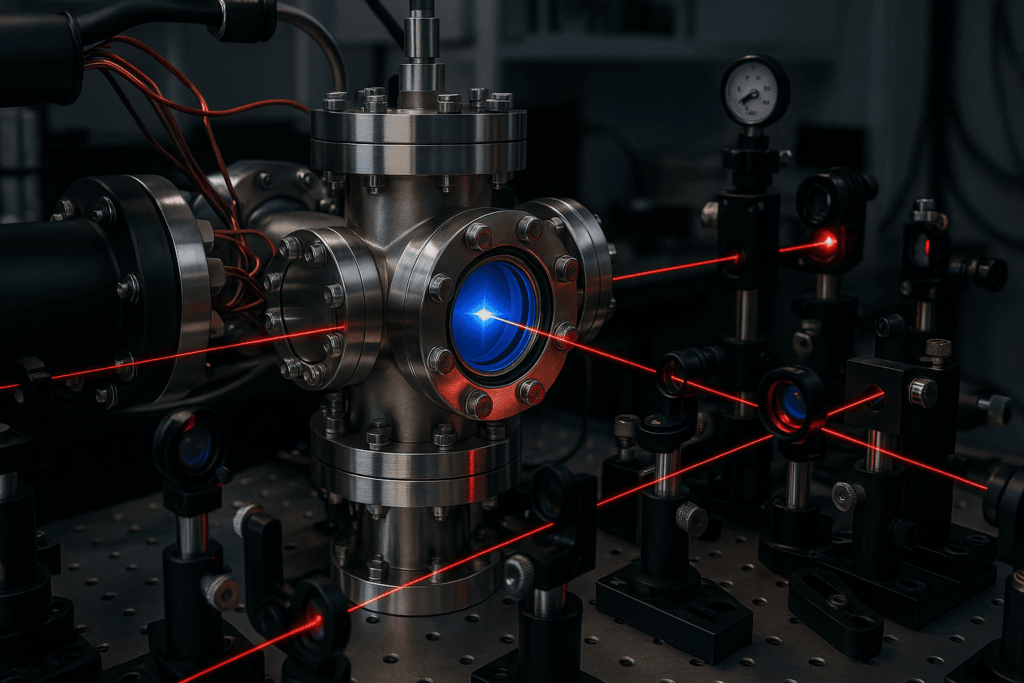
Discussion of Quantum Computing, Linear Algebra, Quantum Ed, and More
Snapshot:

Bio: Jack focuses on AI and physics as CEO of SandboxAQ. Jack is the author of Quantum Computing:An Applied Approach, published by Springer, now a course textbook at many universities and in its second edition.
Discussion
Todd: So overall, what was your overall goal with the book?
Jack: The main goal of the book is to increase the pipeline of qualified personnel for this sector, and that’s for two different audiences. Audience One, of course, is the academic audience. The book is now being used by classes, by courses, I should say, across many universities. And I’m very gratified for all the input and feedback from the first editions, the second edition from those courses being used in Master’s and PhD courses, as well as upper undergraduate or advanced students in undergrad.
Nice for physics majors who’ve now taken two semesters of quantum and maybe some computer science. And now they’re ready for an exposure to quantum computing. And then the second audience is really the corporate audience and the independent technologists. And so both those audiences are post college post-school, right?
Todd: Yeah.
Jack: They completed their degrees. They’re in the workforce for ten years or more. And I ended up teaching a lot of engineers at Google. Quantum Computing and related quantum topics, and I ended up also teaching Python coding. I ended up teaching advanced mathematics inside the internal educational platform of Google live classes. And we also have on demand courses, right? So it was linear algebra to at least a good 500 Googlers.
What I learned from teaching all these courses is that there was a real need for a textbook that was technically rigorous yet accessible.
And a hands-on onramp into the space.
You could also imagine a book that is a nice introduction, but it’s not a technical book. It’s a different audience. Right. And it does not give you a skill.
What we really need in our sector are more skilled individuals.
Todd: Agreed.
Jack: So #1: technically rigorous and enabling skills development, and then #2: accessible.
And what I found in the material that was available before this book is that there were some notes from some from some graduate school classes. But the notes presuppose so many prerequisites. It was just not accessible for the majority of even technical people.
Todd: Right.
Jack: And third thing is hands on. That’s also what’s really missing. And in fact, no book before, you know, two or three years ago could have been hands on, because the python frameworks did not exist.
When I wrote the book, it was a key moment, an inflection point, as you know, because we had quite a few of the Python frameworks from multiple companies all coming out open source. All in the same six month period.
And I decided the book needed to be universal in nature, in supporting and explicating multiple frameworks from multiple companies. And the hands-on aspect is that every time I explain a concept, I then show.
Todd: In real code.
Jack: And then of course the code is fully downloadable on GitHub.
Todd: Github Companion Site
Jack: So those are the three overriding principles.
Technically rigorous, accessible and hands-on.
In the audiences, I had both the adult corporate and independent person. A lot of techies.
If you don’t work for a large company, I still wanted it to be useful and out there. And in fact, I’ve heard from so many independent technologists and engineers who used it to work in the field.
And then of course, corporate training. It’s used in quite a number of corporations as the textbook for their internal courses and trainings and then of course the academic as well. So those are the two big buckets. The main goal to come back to your question: it was to help increase the pipeline.
Todd: On a related note, you might have already answered this, but if you want to put different words to it, what would be the most significant influences that informed your approach to the book? Like I’m guessing probably it’s the experience of the training and also the apprenticeship that you’ve been doing.
Jack: I think there are several factors that shape the material in the book. One was teaching these courses. I both taught courses and also co-taught courses with others and got a lot of hands on experience. And I should mention, not only was I teaching Googlers, you know, semester after semester, but also I ended up teaching some college students. I ended up giving lectures at various PhD programs and also taught very gifted high school students, and each of these audiences helped shape the work. That’s one of the reasons why there’s three chapters of mathematical background in the last part of the book. So I basically hid a math textbook inside.
Todd: Right on.
Jack: Because my experience in teaching these courses demonstrated that while people may have taken some linear algebra back in school, yeah, mainly they forgot most of it and it needed a refresher. So thus was born the linear algebra section.
And I also cover the development of the seven major modalities of building a qubit and building the attempt to build scale quantum computers. One overriding mission that I have in the book is to make it accessible and provide an extensive works cited section for the reader who’s more curious and wants to delve deeper into the literature of the current literature. So there’s citations in the second edition, literally papers appearing up to weeks before we put the book out.
We needed to update some of the material for the 2nd edition based on developments in the field, such as the underlying structure of many quantum algorithms.
Todd: And you probably got feedback after the 1st edition.
Jack: Exactly. I want to give a shout out, a thank you to the readers, faculty and others because they really offered very helpful suggestions in the first and second edition. And so the second edition kind of wrote itself in some ways. Because I was able to really learn from the readers additional material they wanted in the second edition.
Todd: Certainly, it sounds like an excellent community effort, which is great.
Jack: An example is that readers had asked for more explanation on Dirac notation; so we spent more time building that up. People asked for a bit more explanation of Schrödinger’s equation and some of the fundamentals of quantum mechanics. I spent time doing that in the second edition. People wanted more information on error correction and the techniques of error corrections.
Todd: Yeah. In the first section of the book you discuss quantum foundations. Are there any quantum concepts or algorithms that you find most interesting?
Jack: There’s so many fascinating things about Quantum. I remember the first time I learned quantum mechanics back in college, and I have known a bit of it in high school, but more formally had been studying it in college. And I remember where I was, in what building and in which classroom. I remember when I first understood the ideas of superposition and entanglement. The fact that our world is probabilistic and not deterministic. The fact that our world has these features of quantum mechanics in it. It was such an epiphany for me back in back in college. This is the way the world worked. And since then, I was hooked.
Todd: Wow.
Jack: Of course there’s Bell’s Theorem, which I treat in a later chapter, John Bell working in the sixties at CERN. His experiment was not only a theory, but an experimental test that can test whether there were hidden variables, as Einstein had put forth. Einstein, of course, was trying to come back to a deterministic universe, and was fighting till his last day.
Todd: Funny.
Jack: Presupposed by entanglement. So the fact that we can now run these experiments on a quantum computer, we are the first generation of humans to be able to run quantum experiments at will on these kinds of computing devices. It’s a very exciting moment in the history of humanity. We’ve seen milestones like this before in terms of the cracking of DNA, right? The sequencing of DNA in the early 1990s and then the explosion of genomic data and analysis. And now we have the ability to perform physics experiments on a computing device in a repeatable manner. This is a really exciting moment for humanity.
Todd: For sure. So when you discuss hardware in the book, there’s also a discussion of algorithms. Do you have any viewpoint on how important innovation is with designing algorithms in comparison to advances in hardware?
Jack: It’s a great question. The analogy I would give you is if we wanted to dig a tunnel underneath a river and on one bank of the river, we had the hardware folks building ever more powerful and more error corrected hardware platforms.
And on the other bank of the river, we had the Outdoor Folks who were initially working in theory only. Obviously we didn’t have any hardware, but then increasingly we were using some hardware, but developing, you know, algorithms, testing those algorithms, to understand whether they get quantum advantage or not. Working on new methods of error correction. Right. That’s also intrinsic to the rise of quantum computing is better and better methods of error correction. So they’re picking from the other bank of the river.
And then these two groups meet.
And what we’re seeing now is that each one is making progress. And so they’re getting closer and closer to each other in a full stack.
That is going to be a full stack that actually has a massive impact on the world.
And as the hardware gets better, better. Now, of course, we’re in the NISQ era, the noisy intermediate scale quantum processor regime of quantum computers, as coined by John Preskill of Caltech in his paper. And on the error correction side, there’s a lot of great work being done by so many.
But we have to be very careful in claiming that any particular algorithm is going to have quantum advantage by really checking to see if there is no classical analog that has the same complexity class analysis in that.
With that cap in mind, putting that aside, at the moment, we’re seeing a lot of good innovation on both sides of the river so to speak (hardware and algorithms). And I do believe that we’re going to meet in the middle. I’m quite optimistic about the progress that we’re now seeing.
Todd: Fair enough. In the book, I like how the toolkit section just in the table of contents treats math contextually, showing what aspects of math are relevant in all your teaching of linear algebra. Did you always approach it this way, or was there a time when you used a broad, abstract, conventional approach to teaching linear algebra?
Jack: You know, I think that I personally enjoyed very abstract, pure mathematics as well as applied mathematics. But I think that for most people it is more helpful to show more context around the mathematical concepts.
The majority of the mathematical tools are linear algebra and, you know, helping people see the fundamental nature that we can use linear algebra matrices in particular to represent operators. And these operators operate on vectors. And vectors can be state vectors that represent the state of a qubit and in fact, the state of the system.
If you want to look at a total physical system, the fact that operating is represented as matrices and we know a lot about having matrices. And in fact, if we wanted to apply one operator after another, right, the way that you can do this in algebra is quite interesting. And so there’s a lot of efficiency to be gained.
And I think when my students realized that all the efficiency they could gain by picking up and using the algebra tools, they became quite enthusiastic.
Todd: I want to highlight that point you just made, because pedagogically if there can be experiments where you get the hands on stuff, you run a baseline and then you employ whatever tool you’re talking about and you get an efficiency gain, that is perfect.
That’s an aha moment right there.
Is that what you do? Do you do that in the book or just in the training?
Jack: Both. Yeah, in the book. There’s a lot of code throughout the book.
Jack: But the issue is when I spoke to a lot of my students, both at Google and elsewhere, I realized that even if they had taken linear algebra, they had taken it in a math department.
And so it was divorced from any context of either machine learning or quantum mechanics. And it’s not the math department’s fault. It’s just that’s what they would teach you.
The infrastructure that we use both for machine learning, deep learning. What we do is we represent the inputs, the weights, we represent all those as matrices and vectors. And there’s tensors. And that’s why, for example, there’s an open source toolkit called TensorFlow. Tensors are an abstraction, a multi-dimensional abstraction of vectors and matrices.
And by the way, that same algebra underlies both quantum and machine learning. So when I taught linear algebra, I called the course, you know, linear algebra toolkits for AI and quantum mechanics.
Todd: AQ, there you go. The AQ in SandboxAQ.
Jack: Thank you. So that’s the underlying mathematics.
—
If you enjoyed this article, you might like:
- The Economist/SandboxAQ article by James Dargan
- A previous, fun interview I did with Jack Hidary, on workforce development, SandboxAQ and other topics.
If you found this article to be informative, you can explore more current quantum news here, exclusives, interviews, and podcasts.

















